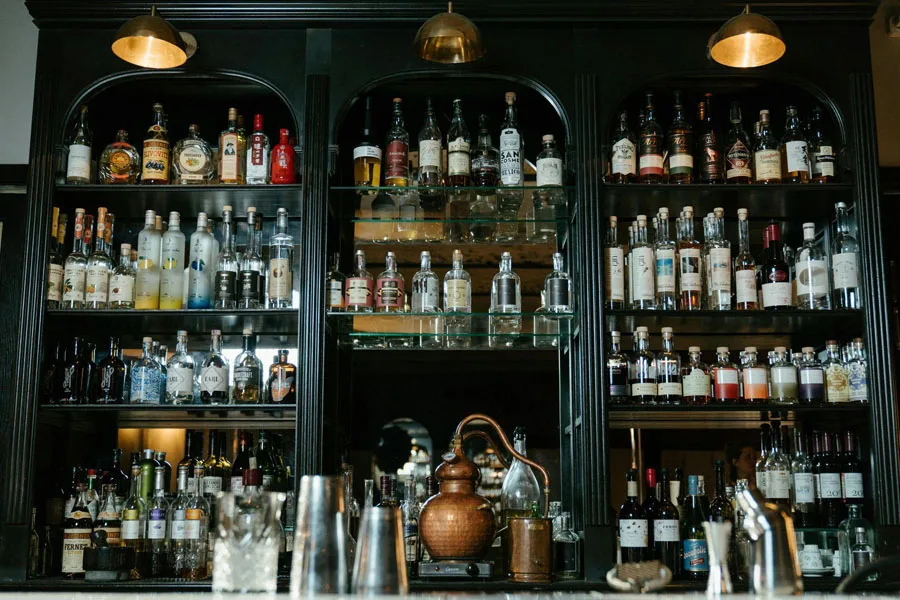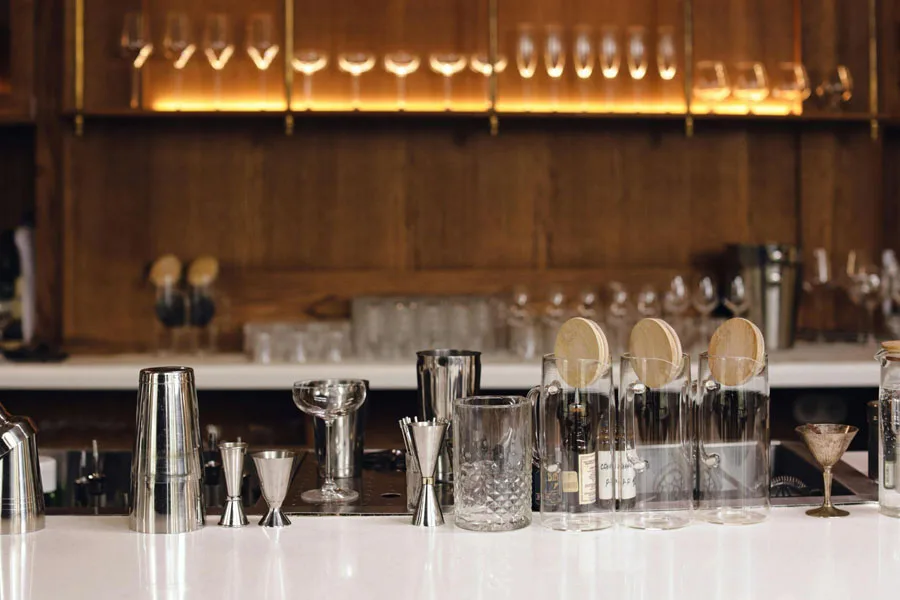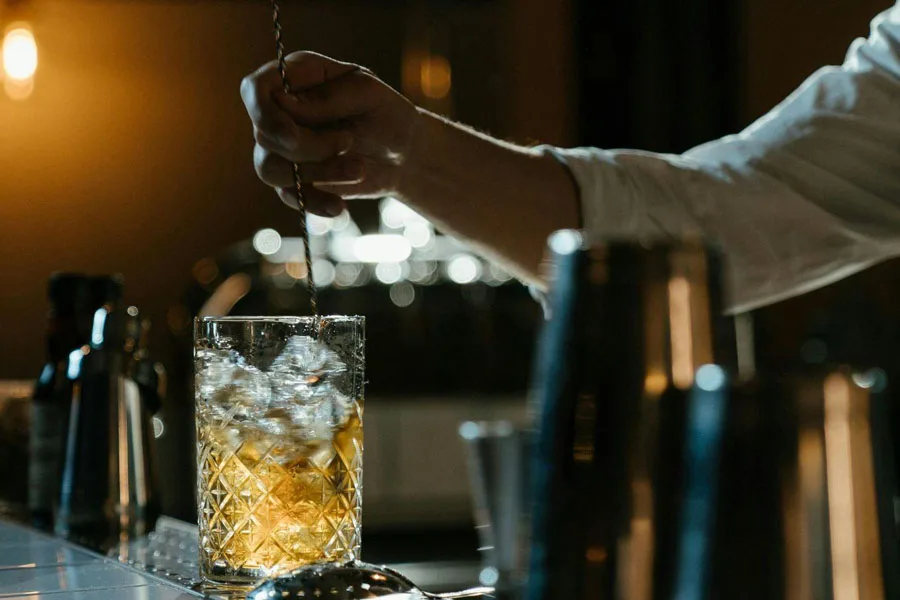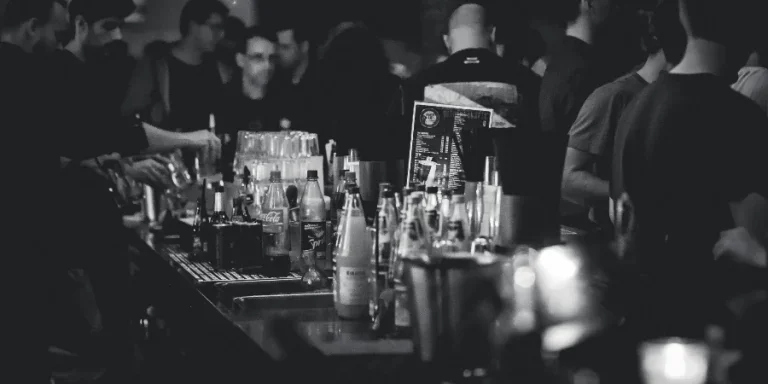In the art of mixology, the distinction between an average and an extraordinary cocktail often boils down to the tools used in its creation. As we look towards 2024, the selection and application of premium bar tools emerge as pivotal elements in elevating the craft of cocktail making. These instruments, ranging from precision-engineered shakers to meticulously crafted strainers and jiggers, are not just accessories but the backbone of innovation and excellence in the drink industry. They empower mixologists to blend tradition with innovation, ensuring each concoction not only tantalizes the taste buds but also sets the standard for quality and creativity. This essence of craftsmanship and innovation is what this exploration seeks to unravel, promising a journey through the evolving landscape of bar tools.
Table of Contents
1. The artisans’ arsenal: Unpacking bar tools
2. The 2024 bar tools saga: Market evolutions and preferences
3. The connoisseur’s compass: Selecting the elite
4. Pinnacle picks: A glimpse into elite models
5. Conclusion: Key takeaways and future glimpses
The essence of mixology transcends the mere combination of spirits and mixers; it is an art deeply rooted in the finesse and function of the tools employed. The selection of bar tools is a deliberate process, reflecting a commitment to quality and precision that distinguishes the extraordinary from the mundane.
The artisans’ arsenal: Unpacking bar tools

At the heart of every meticulously crafted cocktail is a suite of instruments, each serving a unique purpose. These tools are not merely functional; they are extensions of the artisan’s hands, enabling the delicate balance of flavors that define signature cocktails. From shakers that blend and aerate to strainers that refine and purify, the arsenal available to today’s mixologists is both varied and sophisticated.
The symphony of shakers: Crafting the perfect cocktail. Cocktail shakers, in their varied forms, play a pivotal role in the alchemy of mixology. The cobbler shaker, with its built-in strainer and cap, offers a self-contained solution for crafting cocktails, its design lending itself to simplicity and elegance. Conversely, the Boston shaker, a favorite among professional mixologists, demands a more practiced hand. Comprising two cups that fit one into the other, the Boston shaker allows for a quicker chill and mix, although it necessitates a separate strainer. The choice between these shakers can influence not just the texture and temperature of the cocktail but also the efficiency and style of its preparation.
Precision at its finest: Strainers and jiggers uncovered. Precision is paramount in the creation of cocktails, where the exact balance of ingredients can make or break the drink. Strainers such as the Hawthorne and Julep varieties ensure a smooth, sediment-free beverage, critical for maintaining the integrity of finely crafted cocktails. Similarly, jiggers are indispensable for measuring spirits and mixers with precision. The evolution of these tools, particularly the Japanese style jigger, underscores the industry’s shift towards meticulous measurement, enabling mixologists to replicate complex recipes with consistent results.
The integration of these tools into the mixologist’s repertoire is not merely a nod to tradition but a reflection of the ongoing evolution of cocktail culture. As enthusiasts and professionals alike seek to push the boundaries of what can be achieved in a glass, the demand for high-quality, innovative bar tools has never been higher. The meticulous design of these instruments, from the ergonomic grip of a shaker to the precise calibration of a jigger, highlights the industry’s commitment to excellence in every pour.
As we look to 2024, the landscape of bar tools continues to evolve, driven by innovation and a deepening appreciation for the craft of cocktail making. The artisans’ arsenal, ever-expanding and refining, stands at the ready to transform simple ingredients into extraordinary experiences, testament to the art and science of mixology.
The 2024 bar tools saga: Market evolutions and preferences

Experts currently value the bar tools market at US$ 1,788.58 million as of 2021, projecting it to reach US$ 2,334.89 million by 2028. This growth is anticipated to occur at a 3.9% compound annual growth rate (CAGR) from 2021 to 2028. This expansion underscores a growing inclination toward in-house bars and an increasing embrace of e-commerce, signaling a robust period of demand and innovation within the industry.
The landscape of bar tools in 2024 is marked by a relentless pursuit of innovation and a keen responsiveness to consumer preferences. This dual focus has spurred the development of tools that not only elevate the craft of mixology but also cater to the evolving tastes and practices of patrons.
Innovation at the forefront: Steering the future. The forefront of the bar tools market is defined by a series of breakthroughs that blend functionality with aesthetic appeal. Innovations in material science have led to the creation of more durable and visually stunning tools, while ergonomic design has improved user experience, making complex cocktail creation more accessible. Advances in technology have also introduced precision instruments, such as digital jiggers and smart shakers, which promise consistency and perfection with every pour. These innovations are not merely about keeping pace with the industry’s growth; they are about setting new standards that redefine the boundaries of mixology.
The pulse of the patron: Trends redefining demand. The ascent of home bar setups has been a significant driver of demand within the bar tools market. Enthusiasts are seeking professional-grade equipment to replicate the cocktail bar experience in the comfort of their homes. This trend towards domestic sophistication has increased the demand for tools that are both highly functional and decorative, turning the home bar into a focal point of social gatherings. Furthermore, the growing interest in sustainability has seen a preference for tools made from eco-friendly materials, aligning the pleasure of cocktail crafting with the values of environmental stewardship.
The dynamics of consumer preferences underscore a broader shift in the culture surrounding cocktails and mixology. Patrons are increasingly knowledgeable about spirits and the art of cocktail making, which has raised expectations for innovation and quality in the tools they use. This informed clientele not only appreciates the craftsmanship behind their beverages but also demands tools that facilitate a deeper engagement with the mixology process.
As we delve deeper into 2024, the bar tools saga continues to unfold, guided by the twin stars of innovation and consumer preference. The industry is witnessing the emergence of tools that are not just about serving drinks but creating experiences, reflecting a broader cultural appreciation for the art of mixology. This evolution promises not just a future of more efficient and beautiful tools but also a reimagining of the cocktail experience, both in bars and at home.
The connoisseur’s compass: Selecting the elite

Selecting the finest bar tools goes beyond mere aesthetics or brand recognition; it delves into the realms of material integrity and design ingenuity, ensuring longevity and enhancing the user experience. This section explores the pivotal considerations that set apart superior bar tools, guiding those in the industry towards making informed choices that marry form with function.
The alchemy of materials: Crafting for eternity. The cornerstone of longevity and resilience in bar tools lies in the choice of materials. Stainless steel, for instance, stands as the paragon of durability and ease of maintenance, with grades such as 304 and 316 offering superior corrosion resistance and an enduring shine. An example that underscores the superiority of high-grade stainless steel is found in professional-grade cocktail shakers, which not only maintain their aesthetic appeal over countless uses but also withstand the rigors of acidic ingredients and dishwasher cycles.
Beyond metal, the emergence of silicone in the design of bar mats and grip enhancements for tools like jiggers and muddlers illustrates the industry’s pivot towards materials that offer both functionality and user comfort. Silicone’s non-slip properties and resistance to temperature variations make it an ideal choice for high-intensity bar environments.
The shift towards sustainability has also seen the incorporation of materials such as bamboo in the construction of stirring sticks and muddlers. Bamboo’s rapid regrowth cycle and inherent strength render it both an eco-conscious and durable option, appealing to a market increasingly inclined towards environmental responsibility.
Design mastery: Ergonomics meets elegance. In the realm of design, the marriage of ergonomics with aesthetic appeal is what sets elite bar tools apart. Consider, for example, the evolution of the jigger. Traditional jiggers, while functional, often lacked the ease of use present in newer models designed with internal markings. These markings, often laser-etched for precision and durability, enable mixologists to measure ingredients with unmatched accuracy without sacrificing speed, a testament to thoughtful design that does not overlook practicality.
The silhouette of a bar tool, such as the curve of a handle or the weight distribution of a shaker, is meticulously engineered to reduce fatigue and enhance user experience. A shaker with a slightly tapered shape, for instance, affords a more secure grip, reducing the risk of slippage and accidents during vigorous shaking. This consideration for the user’s physical interaction with the tool underscores the importance of ergonomic design in professional settings.
An illustrative example of design innovation is found in strainers with adjustable coils, allowing for a customized fit over a variety of glassware and shakers. This adaptability not only enhances the tool’s functionality but also its utility across different drink preparations, exemplifying how design ingenuity can elevate a simple tool into an indispensable asset.
In navigating the selection of bar tools, these considerations serve as a compass pointing towards choices that blend enduring materials with intelligent design. The examples highlighted herein demonstrate the industry’s commitment to elevating the mixology craft through innovation, ensuring that every selected tool is not just an instrument, but a testament to the art and science of cocktail creation.
Pinnacle picks: A glimpse into elite models

In the landscape of bar tools, certain models and brands stand out for their exceptional quality, innovative design, and dedication to enhancing the mixology experience. These vanguards of the industry set the standards for what professionals and enthusiasts alike come to expect from their tools, each offering unique benefits that cater to the diverse needs of the mixology world.
The vanguard of the industry: A detailed exploration. Cocktail Kingdom’s Koriko® Weighted Shaking Tins – As a centerpiece of Cocktail Kingdom’s offerings, these tins are celebrated for their exceptional balance and ergonomics, making them a staple in professional bars worldwide. The weighted base of the tins facilitates a smoother shaking experience, essential for achieving the perfect texture in cocktails.
OXO Steel Cocktail Shaker – OXO has carved a niche for itself by focusing on user-friendly designs that do not compromise on quality. The Steel Cocktail Shaker is a prime example, featuring a slip-resistant grip and an integrated strainer, which makes cocktail preparation both efficient and comfortable, particularly during busy shifts.
Cresimo 24 Ounce Cocktail Shaker Bar Set – Known for its excellent value, this set from Cresimo includes not just a shaker but also a built-in strainer and a jigger, offering beginners and seasoned professionals a comprehensive toolkit. Its leak-proof design ensures that every shake is clean and precise, enhancing the overall cocktail-making process.
Leopold® Jigger by Cocktail Kingdom – Precision is key in mixology, and the Leopold® Jigger exemplifies this principle. With its elegant design and precise measurement markings, this tool is indispensable for creating consistent and balanced cocktails, demonstrating Cocktail Kingdom’s commitment to both form and function.
Viski Irving™ Pincer Tongs – When it comes to handling ice, the right tool not only needs to be functional but also stylish. Viski’s Irving™ Pincer Tongs meet these criteria with their stainless steel construction and unique pincer design, allowing bartenders to elegantly and efficiently place ice into glasses without compromising the presentation of the drink.
Each of these products reflects a deep understanding of the needs of mixologists, from the durability and balance required for frequent use, to the precision needed for crafting balanced cocktails, and the ergonomic design for comfort and efficiency. By integrating innovative features and prioritizing both functionality and aesthetics, these vanguards of the bar tool industry exemplify what it means to combine the art and science of mixology in every tool they create.
Conclusion: Key takeaways and future glimpses
The journey through the meticulously curated world of bar tools underscores a commitment to quality, innovation, and design that defines the mixology craft. As we look towards the future, beyond 2024, the evolution of these essential instruments is poised to continue, shaped by advances in material science, ergonomics, and a growing emphasis on sustainability. This progression promises to further elevate the art of cocktail creation, offering professionals and enthusiasts tools that are not only more efficient and durable but also more aligned with the ethical and aesthetic values of the times. The path forward is indeed bright, heralding an era where the tools of the trade are as much a statement of craftsmanship as the drinks they help create.




